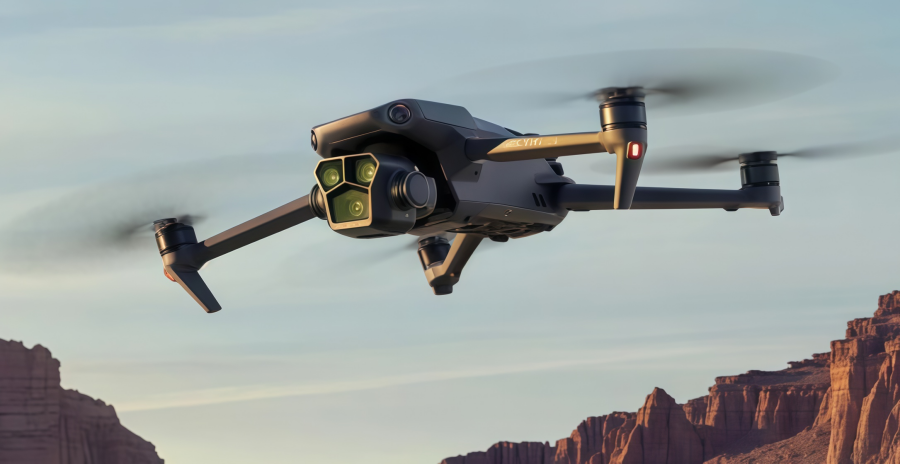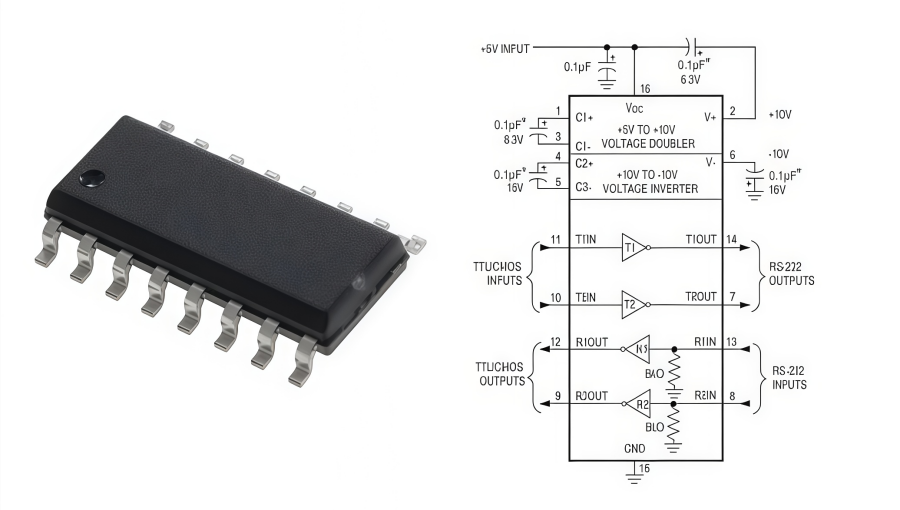
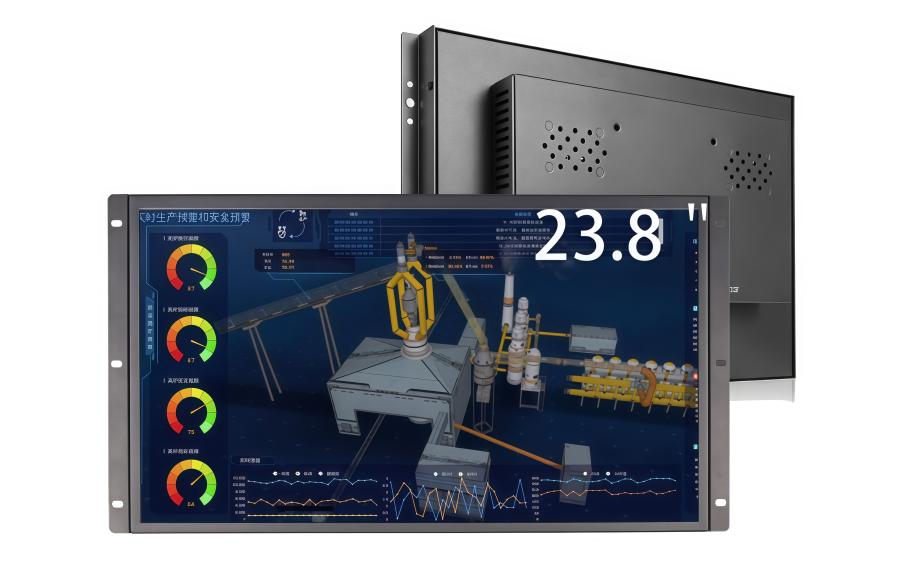
25/12/12
M240UAN01.0 LCD Display: Specs and Application Analysis
With the development of display technology, high-performance, large-size LCD modules are increasingly used in industrial, medical, and monitoring applications. This article focuses on the 24-inch a-Si TFT-LCD module M240UAN01.0 from AUO, helping engineers and buyers better understand its features and advantages.The M240UAN01.0 offers WUXGA (1920×1200) high resolution and supports 16.7 million colors (16.7M, 8-bit), providing clear and detailed visuals. It uses a dual-channel LVDS input interface, making it easy to connect with various industrial and embedded systems. The module does not include a backlight driver board, allowing users to choose a backlight solution according to their needs.This article will help you understand the key specifications, benefits, and suitable applications of the M240UAN01.0. Ande Electronics offers full technical support and fast supply services, making it easy to get cost-effective LCD displays. M240UAN01.0 Technical SpecsIn this section, we will provide a detailed overview of the M240UAN01.0 LCD technical specifications, including resolution, color performance, interface type, and other key parameters. By understanding these core specs, engineers and procurement professionals can better assess the module's compatibility.Parameter ValueBrandAUOModelM240UAN01.0Size24"CompositionLCMResolution1920(RGB)×1200, WUXGA 94PPILuminance300 cd/m² (Typ.)Contrast Ratio1000:1 (Typ.) (TM)Viewangle89/89/89/89Color Depth16.7M 100% sRGBLight SourceWLED [10S4P] , 30K hours , W/O DriverInterface TypeLVDS (2 ch, 8-bit) , 30 pins ConnectorPixel FormatRGB Vertical StripeActive Area522.4(W)×328.0(H) mmFrame Rate60HzTouchscreenWithoutVoltage Supply12.0V (Typ.)Weight2.53Kgs (Typ.)Outline Size546.4(H)×352(V) ×12.2(D) mmMax RatingsOperating Temperature: 0 ~ 50 °C ; Storage Temperature: -20 ~ 60 °C Learn more details: M240UAN01.0 Datasheet PDF(Contact us for a quote) M240UAN01.0 Signal DescriptionIn this section, we will introduce the signal definitions of the M240UAN01.0, including LVDS differential data inputs, differential clock signals, power supply inputs, and ground pins. The signal description of the M240UAN01.0 can be summarized as follows: LVDS Differential Data Inputs (Odd/Even)Odd Data: RxO0 to RxO3, each with positive (+) and negative (-) terminalsEven Data: RxE0 to RxE3, each with positive (+) and negative (-) terminals LVDS Differential Clock InputsOdd Clock: RxOCLK+ / RxOCLK-Even Clock: RxECLK+ / RxECLK- Power and GroundVDD Power Supply Input: Pins 28–30GND Ground: Pins 7, 14, 17, 24No Connection (AUO Test Only)Pins 25–27, do not connect This consolidated layout makes LVDS data and clock ports, power, and ground connections clear and easy for engineers to reference during design and integration.(Contact us for a quote) M240UAN01.0 AdvantagesNext, we will summarize the main advantages of the M240UAN01.0 LCD display, including high-resolution performance, wide temperature adaptability, physical durability, backlight design, and more, allowing you to fully understand the application value of this display module.High-Resolution Display: Supports WUXGA (1920×1200) resolution and 16.7M colors (8-bit), delivering clear, detailed images with accurate color reproduction. Ideal for industrial, medical, and monitoring applications.Wide Temperature Adaptability: Operating temperature range of 0~50°C and storage temperature of -20~60°C, ensuring stable performance in various environmental conditions.Reliable Physical Performance: Maximum vibration level of 1.5G (14.7 m/s²) ensures screen stability during transport and installation.Premium Backlight Design: Features a WLED backlight system with uniform brightness. No backlight driver required, allowing flexible backlight solutions.Environmental and Standards Compliance: Meets sRGB color standard and TCO 7.0 certification. Matte anti-glare surface provides comfortable viewing and meets industry and environmental standards.Easy Installation: Uses an upside interface (Upside I/F), making it easy to integrate with various indu`strial and embedded systems, simplifying design and assembly.(Contact us for a quote) M240UAN01.0 Functional Block DiagramThe following shows the block diagram of the 24 inch Color TFT-LCD Module.From the block diagram, you can see that the M240UAN01.0 has two main parts: the control board and the TFT-LCD panel. First, the external LVDS signal and the VDD power input enter the control board through the connector. The LVDS receiver then reads and decodes the signal. After decoding, the signal goes to the timing controller, which processes it and sends the data to the panel using a mini-LVDS interface. At the same time, the DC/DC converter on the control board generates the voltages needed by the panel, and the gamma correction circuit adjusts the gamma curve to improve brightness levels and color accuracy.On the panel side, the processed data is sent to the X-Driver IC, which drives the TFT-LCD pixel array. The diagram shows signals such as G1–G1200 and D1–D5760, which are the gate and data line signals used for scanning and driving the pixels. This whole process ensures that the 1920×1200 (RGB) pixel array displays the image with the correct timing and stable performance.(Contact us for a quote) M240UAN01.0 Application FieldsThe M240UAN01.0 has a wide range of applications, including industrial and medical fields. In this section, we will highlight its typical uses in industrial automation, embedded systems, medical devices, and test instrumentation. 1. Industrial automation equipmentThe M240UAN01.0 LCD is very suitable for industrial automation systems, such as production line control screens, HMI panels, and monitoring terminals. These devices often run for long hours. This module has good temperature tolerance and vibration resistance, so the display stays clear even in harsh industrial environments. 2. Industrial all-in-one PCs and embedded systemsWith its dual-channel LVDS interface, WUXGA resolution, and wide compatibility, the M240UAN01.0 can be easily used in industrial all-in-one PCs, embedded control boards, and industrial tablets. Since the module has no backlight driver, engineers can choose their own backlight solution, giving more design flexibility. 3. Medical imaging devicesIn medical use, clear images and accurate colors are very important. The M240UAN01.0 offers detailed and sharp images, making it suitable for ultrasound systems, patient monitors, and medical testing devices. 4. Instruments and testing equipmentMany lab devices, measurement tools, and testing equipment need a high-precision display so users can read data and view real-time status clearly. The M240UAN01.0 LCD display shows data more accurately, improving the professionalism and user experience of the instrument. 5. Industrial servers and network equipment terminalsIn server rooms, data centers, or industrial network environments, servers and network devices often use status display screens. The M240UAN01.0 has a stable structure, clear display, and easy integration, making it a good choice for server interfaces, network device panels, and visual monitoring terminals.(Contact us for a quote) ANDE Electronics: Reliable LCD Display SolutionsIn conclusion, the M240UAN01.0 LCD, with its high resolution and stable structure, has been widely used in industrial automation, embedded systems, medical imaging, testing instruments, and more. It delivers a stable, clear, and reliable viewing experience in various environments.As a professional display supplier, Ande Electronics is committed to providing high-quality LCD display modules, dependable technical support, and flexible sourcing services. Whether you are upgrading equipment or developing a new product, we offer trusted and efficient display solutions to help engineers and manufacturers build more stable and higher-performance visual systems.
217

25/12/12
Ande Christmas LCD Display Deals: Festive Discounts & Offers
As Christmas approaches, Ande Electronics has prepared a wide range of Christmas LCD deals, offering high-value LCD display options for all types of customers. Whether for industrial, medical, or automotive applications, you can find the perfect product in this festive promotion.The sale covers a variety of popular models, with all LCD products enjoying festive discounts. These limited-time offers make your purchases more efficient and cost-effective. With reliable inventory and a trusted supply chain, Ande Electronics ensures you can easily take advantage of holiday deals without missing any opportunity.From small displays to large industrial panels, every LCD in the Christmas LCD deals lineup offers excellent value. Take advantage of the holiday spirit to upgrade your display solutions while enjoying exclusive festive discounts from Ande Electronics! Discount Details & Special OffersThis Christmas, Ande Electronics is bringing you exciting festive discounts and special offers to make your LCD purchases even more rewarding! 1. Order-Based Discount CodesSpend $1,000 or more and get a $10 coupon with code ANDE10.Spend $2,000 or more and get a $20 coupon with code ANDE20.Spend $5,000 or more and get a $50 coupon with code ANDE50.Simply use the discount code and contact your sales representative to redeem your savings. 2. Email Subscription Reward – 100% WinSubscribe to our newsletter and receive a $5 coupon instantly! The coupon can be downloaded and used for any order during the promotional period. Each user can only use this coupon once. 3. Referral Bonus for Existing CustomersShare the promotion with friends! When a referred friend places an order and it is shipped, contact [email protected]. After verification, cashback will be issued after the promotion ends.Successful referrals totaling $1,000 = $5 cashbackSuccessful referrals totaling $2,000 = $10 cashbackSuccessful referrals totaling $5,000 = $25 cashbackTake advantage of these limited-time festive offers to save more while upgrading your display solutions!(Contact us for a quote) Featured LCD Products on SaleDuring this Christmas promotion, Ande Electronics has selected a range of popular LCD displays to meet the diverse needs of customers. Here are some of the most popular models: G185HAN01.0The G185HAN01.0 is an 18.5-inch a‑Si TFT‑LCD module from AUO. It features a 1920×1080 (FHD) resolution and supports 16.7M colors (8-bit, sRGB) for rich color display. The active area is approximately 408.96×230.04 mm, with overall dimensions of 430.4×254.6×12.5 mm. It has a typical brightness of 350 cd/m² and a contrast ratio of 1000:1, paired with a WLED backlight that lasts over 50,000 hours. The module uses a LVDS (2 channel, 8-bit) 30-pin connector and typical power supply is 5 V. It can operate reliably in temperatures from -20 to +70 °C.s LQ190N1LW01The LQ190N1LW01 is a 19.0-inch a‑Si TFT‑LCD module from Sharp, featuring a 1680×1050 (WSXGA+) resolution and support for 16.7 million colors (8-bit, 16.7M). The panel uses VA (Normally Black) mode with 300 cd/m² brightness and a contrast ratio of 900:1, paired with a WLED backlight lasting ≥70,000 hours and a matte anti-glare surface with 3H hard coating, ideal for applications requiring high stability and visibility.It offers a viewing angle of 85°/85°/85°/85° (L/R/U/D) and a response time of 35 ms (Tr + Td). The interface is LVDS (2-ch, 8-bit, 30-pin) with a typical supply voltage of 12.0 V. Weighing only 1.6 kg (max.), it provides a reliable display solution for most embedded systems and industrial applications. DJ080IA-11A The DJ080IA-11A is an 8.0-inch a‑Si TFT‑LCD panel from Innolux with a 1280×720 (WXGA) resolution and support for 262K / 16.7M colors. It has a typical brightness of 750 cd/m² and a contrast ratio of 1000:1. The panel measures about 192.8 × 116.9 mm, with a thickness of 6.4 mm and a weight of 205 g. Its surface features a matte anti-glare finish, suitable for outdoor or bright-light environments.The display offers a response time of 10/15 ms, a typical supply voltage of 3.3 V, an operating temperature range of -30 ~ +85 °C, and a storage temperature up to -40 ~ +90 °C. With high brightness, wide temperature tolerance, wide viewing angles, and anti-glare surface, the DJ080IA-11A is ideal for car displays, outdoor equipment, and other demanding applications. SP14Q006The SP14Q006 is a 5.7-inch FSTN‑LCD module from KOE / Hitachi, designed for industrial applications. It has a resolution of 320 × 240 (QVGA) and features a monochrome (black & white) display with a pixel density of about 70 PPI. The module has a lifespan of approximately 40,000 hours, comes without a backlight driver, and has a matte anti-glare surface, making it suitable for industrial environments with strong ambient light.It supports a parallel 4-bit interface (14‑pin FPC), with a typical supply voltage of 3.3V / 5.0V, an operating temperature range of -20 ~ +70 °C, and a storage temperature range of -30 ~ +80 °C. With its simple structure and low power consumption, the SP14Q006 is ideal for embedded systems, industrial control panels, and instrumentation devices. M170ETN01.0The M170ETN01.0 is a 17.0-inch a‑Si TFT‑LCD module from AU Optronics (AUO), designed for industrial displays and monitoring systems. It features a 1280 × 1024 (SXGA) resolution, supports 16.7 million colors (16.7M), and uses a TN, Normally White structure with RGB vertical stripe pixel arrangement. The module has a 2-ch LVDS (8‑bit, 30‑pin) interface, a typical supply voltage of 5.0 V, a response time of 3.5/1.5 ms (Tr/Td), and viewing angles of 85/85/80/80° (L/R/U/D). This display offers stable performance, a moderate size, and a mature interface design.(Contact us for a quote) Why Buy LCDs from Ande Electronics?Since 1998, Ande Electronics has been a trusted distributor of electronic components and LCD displays, delivering over 1.2 billion parts to customers in more than 100 countries. With a vast in-stock inventory and long-term partnerships with leading global brands, Ande ensures high-quality, cost-effective LCD solutions for industries including industrial automation, medical, aerospace, telecommunications, AI, IoT, and more. Our team of experienced engineers and sales professionals provides customization support, 24/7 online assistance, and expert guidance to meet diverse application needs.(Contact us for a quote) How to Purchase?During Ande Electronics Christmas promotion, purchasing LCD products is very convenient. You can visit the official website to browse the selected products in the Christmas LCD deals, or directly choose the models and quantities you want - all products are available at a discount. Customers with qualifying orders can use discount codes to redeem corresponding coupons and enjoy limited-time festive discounts. Additionally, newsletter subscribers receive a $5 coupon for extra savings. Existing customers can also participate in the referral cashback program by sharing the promotion link with friends. Whether you are a new customer or a long-term partner, Ande Electronics provides a simple and efficient purchasing process, making it easy to get high-value LCD displays during the Christmas season.(Contact us for a quote)
229
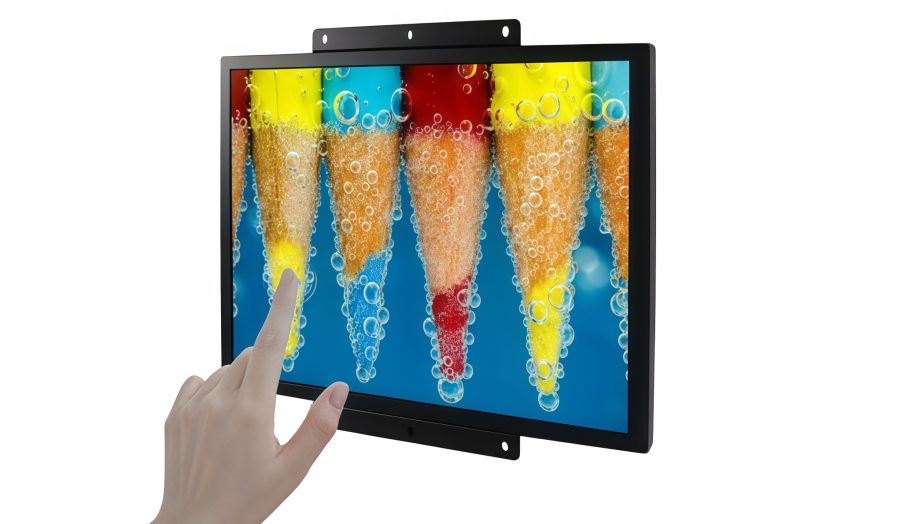
25/12/05
G190EG02 V1 19" Industrial LCD Overview & Uses
The G190EG02 V1 is a 19.0-inch diagonal a-Si TFT-LCD display panel manufactured by AUO, designed for high-quality visual performance in a wide range of applications. Featuring a Color Active Matrix Liquid Crystal Display (TFT-LCD) structure, this panel integrates a high-resolution TFT-LCD panel, an advanced driver circuit, and a reliable backlight system. With a screen resolution of SXGA (1280 × 1024) and support for 16.7 million colors, the G190EG02 V1 ensures clear, vivid images and smooth color transitions.The display is engineered to accept 2-channel LVDS input signals, ensuring seamless compatibility with modern graphics and computing systems. Its stable performance and versatile interface make it suitable for applications requiring precise visual output, high reliability, and consistent color reproduction. Users can expect efficient integration into various hardware environments.This article will help professionals better understand the features, applications, and technical advantages of the G190EG02 V1, offering a reliable reference when selecting high-performance TFT-LCD panels for their projects. G190EG02 V1 Technical SpecsFirst, we will introduce its core technical specifications in detail, including screen size, resolution, color depth, interface type, and more. This will provide a reference for selection and system integration.Parameter ValueBrandAUOModelG190EG02 V1Size19"CompositionLCMResolution1280(RGB)×1024, SXGA 86PPILuminance300 cd/m² (Typ.)Contrast Ratio2000:1 (Typ.) (TM)Viewangle89/89/89/89Color Depth16.7M 70% NTSCLight SourceWLED , 50K hours , With LED DriverInterface TypeLVDS (2 ch, 8-bit) , 30 pins ConnectorPixel FormatRGB Vertical StripeActive Area380.32(W)×305.06(H) mmFrame Rate60HzTouchscreenWithoutVoltage Supply5.0V (Typ.)Weight1.75Kgs (Typ.)Outline Size396(H)×324(V) ×18.9(D) mmMax RatingsOperating Temperature: 0 ~ 60 °C ; Storage Temperature: -20 ~ 60 °C Learn more details: G190EG02 V1 Datasheet PDF(Contact us for a quote) G190EG02 V1 Signal DescriptionNext, we will cover the G190EG02 V1TFT-LCD module signals, including power, ground, LVDS data, clock, and interface selection pins. Understanding these helps engineers make accurate connections and control designs.1–6. RxOIN0–2 / RxOIN2+: LVDS differential data inputs (Odd data). Pin 5–6 also carry H-Sync, V-Sync, and DSPTMG signals.7, 14, 17, 24, 25, 27. VSS: Power Ground.8–9. RxOCLKIN±: LVDS differential clock input (Odd clock).10–11. RxOIN3±: LVDS differential data input (Odd data).12–13. RxEIN0±: LVDS differential data input (Even data).15–16. RxEIN1±: LVDS differential data input (Even data).18–19. RxEIN2±: LVDS differential data input (Even data).20–21. RxECLKIN±: LVDS differential clock input (Even clock).22–23. RxEIN3±: LVDS differential data input (Even data).26. NC: Do not connect (for AUO test).28–30. VCC: +5.0V Power Supply.(Contact us for a quote) G190EG02 V1 Pros and ConsWhen choosing a display panel, it is important to understand its pros and cons. The G190EG02 V1 has several advantages, but it also has some limitations. This section analyzes the main strengths and potential drawbacks of the G190EG02 V1 in detail. Prosl 1280×1024 (SXGA) high resolutionl Full viewing angle displayl Built-in LED driverl Integrated WLED backlight systeml 300 cd/m² high brightness & 2000:1 high contrast ratiol Matte panel surfacel 70% NTSC color gamut, 92% sRGB coveragel WLED backlight lifespan ≥50,000 hoursl LVDS (2-channel) interfacel Vibration resistance up to 1.5G (14.7 m/s²)l Slim and compact designl Total power consumption only 30.6Wl Wide operating and storage temperature rangel RoHS compliantl G190EG02 V1 Functional Block Diagram Consl No touch function; direct touch operation is not possible.l Limited visibility in bright environments.l Compatibility may be restricted with some systems.l Not suitable for ultra-portable applications.(Contact us for a quote) G190EG02 V1 Functional Block DiagramThe following diagram shows the functional block of the G190EG02 V1 Color TFT-LCD Module: The G190EG02 V1 functional block diagram shows its main signal and power flow. The panel receives external input via the LVDS interface and is powered by a +5V supply. LVDS signals are first processed by the LVDS receiver, then sent to the timing controller and RSDS transmitter to ensure correct TFT-LCD pixel refresh.Inside the panel, a DC/DC converter handles voltage conversion and level adjustment. A Gamma correction circuit optimizes image brightness and color. For backlight, the G190EG02 V1 uses an LED system powered by an external LED driver, which provides DC power and drive signals. Control signals pass through the panel’s ASIC chip to the X-Driver IC for precise pixel control. Backlight brightness and drive power are managed by Gamma correction and the DC/DC converter, keeping the display stable under high brightness and low power conditions.(Contact us for a quote) G190EG02 V1 ApplicationsThe G190EG02 V1 offers high stability, wide viewing angles, and steady brightness. It fits many uses, such as industrial control, medical devices, POS/ATM terminals, and security monitors. In all these applications, it delivers a clear and stable display.1. Industrial controlThe G190EG02 V1 is very suitable for industrial automation, HMI panels, and production monitoring systems. Its high resolution shows data, flow charts, and alarm messages clearly. The wide viewing angle allows operators to read the screen from different positions. The LED backlight gives a longer lifetime and supports 24/7 factory use. 2. Medical equipmentIn medical use, clear images and accurate colors are very important. The Gamma correction and stable brightness of the G190EG02 V1 help keep image details clear. It fits patient monitors, lab analysis devices, and nurse workstations. The stable LED backlight helps medical staff get information quickly and correctly. 3. POS / ATM terminalsPOS and ATM systems must handle long working hours, frequent use, and different lighting conditions. The G190EG02 V1 can show more transaction information and improve the user experience. Its wide viewing angle and even brightness make the screen easy to read at the counter or in outdoor ATM machines. 4. Surveillance and security systemsIn monitoring centers or security systems, screens must run for long hours and keep stable image quality. The LED backlight and uniform brightness of the G190EG02 V1 ensure smooth video display. It is suitable for security walls, traffic monitoring, and building security displays. It can show important details such as plates, human shapes, and motion.(Contact us for a quote) Handling Precautions 1. Avoid scratching the front polarizer; it is easily damaged.2. Turn off the power before connecting or disconnecting the input.3. Wipe off water immediately to prevent spots or discoloration.4. Clean the panel with soft cloth or absorbent cotton.5. Handle carefully; glass panel may break if dropped or bumped.6. Prevent static discharge; ground yourself when handling CMOS LSI.7. Do not open or modify the module.8. Avoid pressing the reflector sheet at the back.9. When returning the module to its slot, press gently at LED light bar ends, not the center.10. Do not rotate or tilt the signal interface connector during insertion/removal.11. Do not twist or bend the module after installation; design enclosure to avoid stress.12. LCD uses limited non-flammable materials; use power supply per Limited Power Source standards (IEC60950/UL1950).(Contact us for a quote) ANDE Electronics: Reliable LCD Display SolutionsIn conclusion, the G190EG02 V1 LCD display is a strong choice for industrial control systems, medical equipment, POS/ATM terminals, and security monitoring applications.As a professional electronic components supplier, Ande Electronics is dedicated to offering high-quality LCD modules, dependable technical support, and flexible sourcing services. Whether for equipment upgrades or new product development, we provides a trusted and efficient display solution, helping engineers and manufacturers build stable and high-performance visual systems.
257
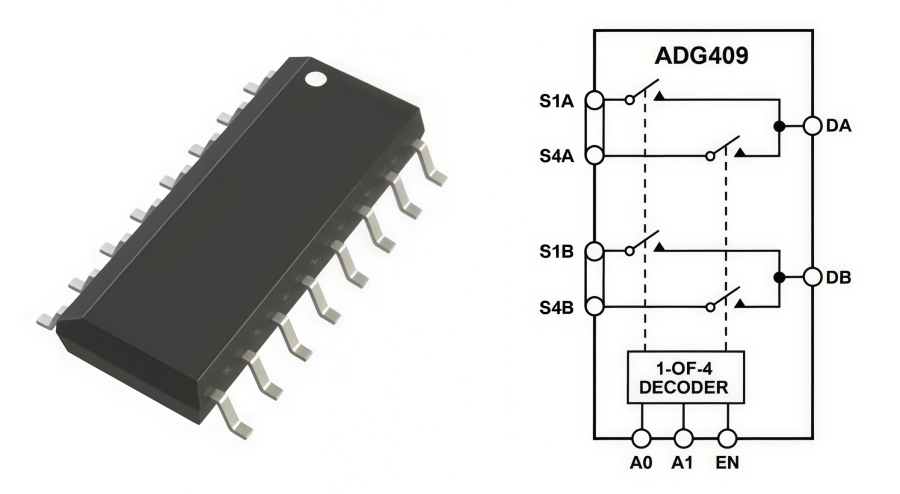
25/12/03
ADG409BRZ Analog Switch | Technical Guide
ADG409BRZ OverviewThe ADG409BRZ is a high-performance CMOS analog multiplexer from Analog Devices. It belongs to the ADG408/ADG409 product family. The device offers four differential channels. A 2-bit binary address (A0, A1) selects any one channel and routes it to the common differential port. It also includes an EN enable pin. When disabled, all channels are turned off to block signal transmission and improve system safety.The ADG409BRZ uses an enhanced LC²MOS process. It achieves low power consumption, fast switching, and low on-resistance. Its channels support bidirectional signal flow and full power-supply signal swing. This ensures strong isolation in both on and off states. Break-Before-Make switching avoids short-term shorts during transitions. It maintains system stability and reduces switching noise. Low charge injection minimizes transient distortion, making the device suitable for precision analog applications.As an upgraded replacement for the DG409, the ADG409BRZ provides improved performance and reliability. It is well suited for data acquisition systems, signal switching matrices, measurement and control equipment, and other applications requiring accurate multi-channel signal routing. For low-power, high-isolation, and high-linearity designs, the ADG409BRZ is a trusted analog front-end switch solution. ADG409BRZ SpecificationsParameterValuePart NumberADG409BRZDescriptionIC MULTIPLEXER DUAL 4X1 16SOICLead Free Status / RoHS StatusLead free / RoHS CompliantPackagingTubeSupplier Device Package16-SOIC (0.154, 3.90mm Width)Manufacturer Standard Lead Time19 WeeksCharge Injection20pCDetailed Description2 Circuit IC Switch 4:1 100 Ohm 16-SOICCrosstalk-85dB @ 100kHzOperating Temperature-40°C ~ 85°C (TA)Channel-to-Channel Matching (ΔRon)15 Ohm (Max)Multiplexer/Demultiplexer Circuit4:1Current - Leakage (IS(off)) (Max)500pAVoltage - Supply, Dual (V±)±15VVoltage - Supply, Single (V+)12VMoisture Sensitivity Level (MSL)1 (Unlimited)Channel Capacitance (CS(off), CD(off))11pF, 20pFNumber of Circuits2On-State Resistance (Max)100 Ohm(Contact us for a quote) ADG409BRZ Pin ConfigurationsA0: Logic Control Input.EN: Active High Digital Input. When low, the device is disabled and all switches are off. When high, Ax logic inputs determine on switches.VSS: Most Negative Power Supply Potential in Dual Supplies. In single-supply applications, it can be connected to ground.S1A: Source Terminal 1A. Can be an input or an output.S2A: Source Terminal 2A. Can be an input or an output.S3A: Source Terminal 3A. Can be an input or an output.S4A: Source Terminal 4A. Can be an input or an output.DA: Drain Terminal A. Can be an input or an output.DB: Drain Terminal B. Can be an input or an output.S4B: Source Terminal 4B. Can be an input or an output.S3B: Source Terminal 3B. Can be an input or an output.S2B: Source Terminal 2B. Can be an input or an output.S1B: Source Terminal 1B. Can be an input or an output.VDD: Most Positive Power Supply Potential.GND: Ground (0 V) Reference.A1: Logic Control Input. (Contact us for a quote) ADG409BRZ Highlights44 V supply maximum ratingsVSS to VDD analog signal rangeLow on resistance (100 Ω maximum)Low power (ISUPPLY < 75 μA)Fast switchingBreak-before-make switching actionPlug-in replacement for DG409 Low Power Dissipation.Extended Signal Range. Low Ron.Single-Supply Operation. (Contact us for a quote) ADG409BRZ Functional Block DiagramThis diagram shows the internal logic of the ADG409. It is a dual 4-to-1 analog multiplexer. The structure has two parallel signal paths: Channel A (S1A to S4A to DA) and Channel B (S1B to S4B to DB).At the bottom, the “1-of-4 decoder” is the control core. It receives three digital inputs: A0, A1, and EN.EN (Enable): This is the main switch. The device works only when EN is active. If EN is inactive, all switches turn off.A0 and A1: These two address bits select one of the four channels by a binary code (00, 01, 10, 11). The dashed lines show that Channel A and Channel B always switch together. The switch symbols show that the ADG409 uses analog switch elements. They allow current to flow in both directions. This design gives low on-resistance and high off-isolation. With the common pins DA and DB, the device can route up to four differential input pairs to the next stage, such as a differential ADC or an instrumentation amplifier. It helps simplify multi-channel data acquisition systems.(Contact us for a quote) ADG409BRZ Applications1. Audio and Video RoutingADG409BRZ supports full-swing differential signal transmission. It offers low noise and low distortion when switching. It is ideal for audio switching matrices, home theater systems, and multimedia switchers. In video systems, it can be used for multi-camera signal routing and surveillance front-end switching. It helps improve image quality and signal reliability. 2. Automatic Test Equipment (ATE)Production test systems often need to scan multiple channels. ADG409BRZ can be easily controlled by an MCU or FPGA. It allows fast switching between test channels. Its high isolation prevents inactive channels from affecting the measurement results. It improves test accuracy and efficiency. 3. Data Acquisition SystemsFor multi-sensor inputs, ADG409BRZ can work as a front-end signal selector. It routes multiple differential sensor signals to a single ADC. This helps reduce system cost. Its low charge injection ensures stable sampling without switching artifacts. 4. Battery-Powered SystemsThanks to its enhanced LC²MOS process, ADG409BRZ achieves very low power consumption and low leakage. It helps extend battery life. It is suitable for portable medical devices, wearable products, and handheld instruments. 5. Sample-and-Hold SystemsThe switch has excellent on-state performance with low on-resistance and low distortion. It ensures stable signal selection during sampling. It improves the accuracy and linearity of sample-and-hold circuits. 6. Communication SystemsIn wireless systems, baseband signal routing, and modem circuits, ADG409BRZ provides flexible switching for differential signals. It supports bidirectional signal flow and maintains high isolation. It is suitable for high-speed interface switching applications.ADG409BRZ Outline Dimensions(Contact us for a quote) ADG409BRZ Outline DimensionsThis section provides detailed outline dimensions of the ADG409BRZ device. The figure below shows the precise physical dimensions of its 16-lead narrow-body surface-mount package (such as 16-SOIC). All key measurements are marked in both millimeters (mm) and inches (inch).(Contact us for a quote) ANDE Electronics: Your Trusted Partner in Electronic Component SourcingAt ANDE Electronics, we make getting the electronic components you need simple and fast. We work directly with top global manufacturers to provide high-quality components that have passed our strict checks, so you can count on them for your projects.We also focus on quick and consistent delivery to keep your work on schedule and avoid delays. When you need reliable and efficient electronic parts for your projects, ANDE Electronics is a partner you can trust.
134
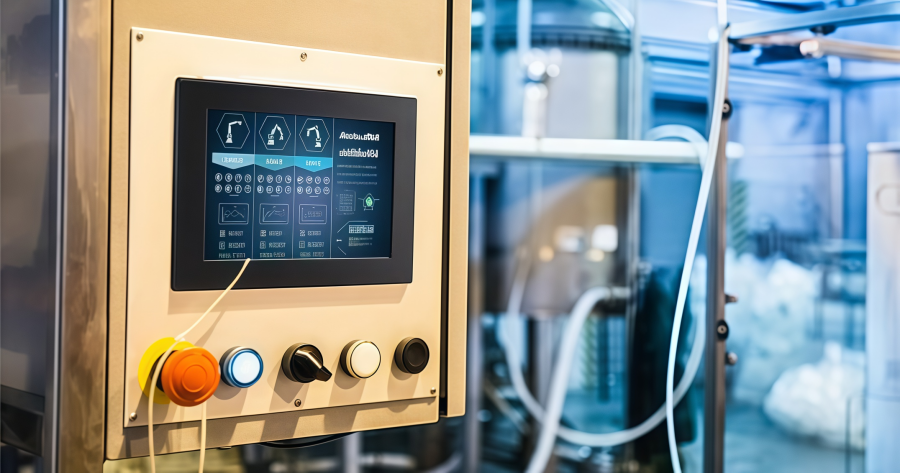
25/11/28
NL6448AC33-29 Industrial TFT LCD for Control Systems & PCs
The NL6448AC33-29 is a 10.4-inch TFT active matrix LCD for reliable and high-quality visual performance. It uses amorphous silicon TFT technology with a built-in driving circuit and an integrated backlight system. With 640 × 480 resolution (VGA) and the ability to display 262,144 colors, the NL6448AC33-29 delivers clear images and accurate color reproduction. The backlight uses long-life lamps that can be replaced when needed, helping to reduce downtime in industrial environments and extend product lifetime.This display offers high luminance and extra-wide viewing angles, it's suitable for different installation positions and environments. It also supports selectable viewing direction by changing the scan direction. In this article, Ande Electronics provides detailed insights into NL6448AC33-29 features, specifications, applications and industrial usage guidance to help engineers make better component selection decisions. NL6448AC33-29 Key SpecsTo help engineers quickly understand the core performance of the product, this section summarizes the key technical specifications of the NL6448AC33-29. It includes essential parameters such as display size, resolution, brightness, color capability, and operating temperature range. These details make it easier to compare options and select the right solution for industrial applications.Parameter ValueBrandNLTModelNL6448AC33-29Size10.4"CompositionLCMResolution640(RGB)×480, VGA 76PPILuminance250 cd/m² (Typ.)Contrast Ratio150:1 (Typ.) (TM)Viewangle80/80/80/80Color Depth262K 45% NTSCLight SourceCCFL [2 pcs] , With InverterInterface TypeCMOS (1 ch, 6-bit) , 31 pins ConnectorPixel FormatRGB Vertical StripeActive Area215.4(W)×161.8(H) mmFrame Rate60HzTouchscreenWithoutVoltage Supply3.3/5.0V (Typ.)(VCC)Weight525g (Typ.)Outline Size243(W)×185.1(H)×11.2(D) mmMax RatingsOperating Temperature: 0 ~ 50 °C ; Storage Temperature: -20 ~ 60 °C (Contact us for a quote)NL6448AC33-29 Structure and FunctionsThe NL6448AC33-29 display module consists of three main parts: a TFT LCD panel structure, driver LSIs, and a backlight unit. The panel is made by placing liquid crystal material between a TFT array substrate and a color filter substrate. This layered design allows precise control of light and color output. Once the driver LSIs are connected to the panel, the backlight is integrated to complete the module.The module receives RGB data from the source system. The onboard signal processor converts these signals into a format suitable for active-matrix addressing. The driver LSIs then send the processed data to the individual TFT cells. Each pixel on the screen is controlled directly by these thin-film transistors to ensure accurate and stable imaging.Each TFT cell works as an electro-optical switch. When triggered, it adjusts the amount of light passing from the backlight through the corresponding red, green, and blue sub-pixels. By controlling light transmission for each pixel, the NL6448AC33-29 produces clear and vibrant color images.(Contact us for a quote) NL6448AC33-29 FeaturesTo better understand the NL6448AC33-29, this section introduces its key features. You will see why this industrial TFT display can support long-term and stable performance in many devices.• Ultra wide viewing angle with lateral electric field• High luminance (250 cd/m2, typ.)• Low reflection• 6-bit digital RGB interface• Data enable (DE) function• Incorporated edge type backlight with lamps (Two lamps, with inverter)• Lamp holder replaceable (Type No.: 104LHS31)• Reversible scan direction• Variable luminance control• Easy to assemble a touch panel• No antiglare treatment(Contact us for a quote) NL6448AC33-29 AdvantagesNL6448AC33-29 not only offers excellent display performance but also provides many strong advantages. This section will explain its benefits from different aspects. It helps engineers better understand its value in industrial equipment applications. Integrated Backlight SystemBuilt-in CCFL backlight with replaceable lamps. Extends service life and reduces long-term maintenance costs. Built-in InverterThe module includes an inverter. No extra driver circuit is needed, helping reduce device size and assembly complexity. 180° Screen RotationSupports scan direction switching. Can adjust display orientation according to device installation, improving application flexibility. Industrial Temperature RangeOperating temperature: 0~50°C, storage temperature: -20~60°C. Suitable for most industrial equipment. Good Vibration ResistanceCan withstand up to 2.0G vibration. Suitable for industrial environments with mechanical vibration, enhancing device reliability.(Contact us for a quote) NL6448AC33-29 Use CasesIn this section, we will introduce its typical use cases in various industrial scenarios. As an industrial-grade TFT display, the NL6448AC33-29 is suitable for control system display terminals, process controller monitors, and industrial PCs, providing clear visual output and enhancing operational efficiency and system reliability. Display Terminals for Control SystemsThe NL6448AC33-29 is suitable for various control system displays. For example, in a factory automation control room, it can serve as the main screen on a control console. It shows real-time production line status, equipment parameters, and alarm messages. Its high brightness and wide viewing angle ensure operators can clearly read data from different positions, improving monitoring efficiency and accuracy. Monitors for Process ControllersIn process control applications, the NL6448AC33-29 can be used as a monitor for process controllers. For example, in a chemical plant’s temperature and pressure control system, it can display sensor data in real time and help operators make precise adjustments. Its vibration resistance and industrial operating temperature range ensure stable performance in high-temperature or mechanically active environments. Industrial PCsThe NL6448AC33-29 can also be used in industrial PC display modules. For example, in a logistics warehouse system, it can show warehouse management software screens or barcode scanning data. Its built-in backlight and adjustable display direction make it adaptable to different cabinet layouts while ensuring clear data visualization and comfortable operation.(Contact us for a quote) NL6448AC33-29 Industrial Usage Guide1. Provide a stable DC power supply and avoid voltage fluctuations.2. Ensure interface compatibility to prevent signal issues.3. Built-in inverter, no extra driver circuit needed.4. Avoid pressing or squeezing the screen edges.5. Supports 180° screen rotation, adjustable according to installation.6. Use vibration damping during mounting to prevent damage.7. Operating temperature: 0~50°C; storage temperature: -20~60°C.8. Avoid high humidity, dust, or corrosive environments.9. Keep away from strong magnetic fields and high-power interference.10. CCFL backlight lamps are replaceable to extend lifespan.11. Turn off power and follow safety procedures when replacing.12. Avoid displaying static images for long periods.13. Clean the screen regularly.14. Check power, signals, and environment if abnormalities occur.(Contact us for a quote) ANDE Electronics: Reliable LCD Display SolutionsIn summary, the NL6448AC33-29 LCD screen, with its 10.4-inch diagonal, 640×480 resolution, built-in CCFL backlight, wide viewing angle, and stable industrial performance, is ideal for applications such as control system display terminals, process controller monitors, and industrial PCs.As a professional electronic components supplier, Ande Electronics is dedicated to providing high-quality LCD modules, reliable technical support, and flexible purchasing services. Whether for upgrading existing industrial equipment or developing new projects, the NL6448AC33-29 serves as a dependable core display component, helping engineers and manufacturers achieve efficient and stable visual solutions in industrial environments.
119
